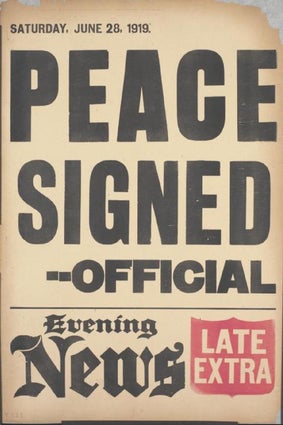
The Treaty of Versailles was the peace settlement that ended the First World War in 1919.
The treaty was signed on the 28th June 1919, in the Hall of Mirrors at the Palace of Versailles in France, and it marked the end of a long and devastating war that had claimed millions of lives and caused immense destruction.
It was the most significant outcome of the Paris Peace Conference, which was held from January to June 1919 to negotiate peace treaties between the victorious Allied powers and the defeated Central Powers.

A British news placard announcing the signing of the peace treaty which signified the official end of the First World War.
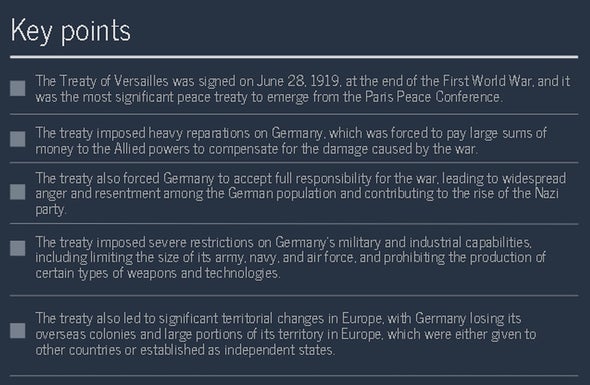
Versailles, an architectural marvel situated just outside Paris, emerged from modest beginnings as a royal hunting lodge in the 17th century under the visionary reign of King Louis XIV.
The palace underwent a grand transformation into a symbol of absolute monarchy, reflecting the Sun King's desire for centralized power.
Louis XIV, also known as the "Builder King," orchestrated the expansion of the palace and the creation of its enchanting gardens, designed in the French formal style.
The opulence of Versailles reached its zenith during Louis XIV's reign, epitomized by the splendid Hall of Mirrors, completed in 1684.
This majestic hall became the backdrop for significant diplomatic and political events, hosting foreign dignitaries and shaping European history.
Subsequent monarchs, including Louis XV and Louis XVI, continued to contribute to the grandeur of Versailles.

The striking gallery inside the Palace of Versailles, 1890's..
However, the palace's fate took a tumultuous turn during the French Revolution in 1789, as the monarchy collapsed and the palace faced various uses, from a museum to a residence for Napoleon Bonaparte.
By the time of the signing of the Treaty of Versailles in 1919, the palace had experienced centuries of political, cultural, and societal transformations, bearing witness to the ebbs and flows of French history.


One of the key objectives of the Treaty of Versailles was to impose significant territorial, military, and financial penalties on Germany.
These included the loss of territory, the reduction of Germany's military to a small defensive force, and the payment of war reparations to the Allies.
These penalties were designed to limit Germany's economic and military power and prevent it from posing a threat to Europe.

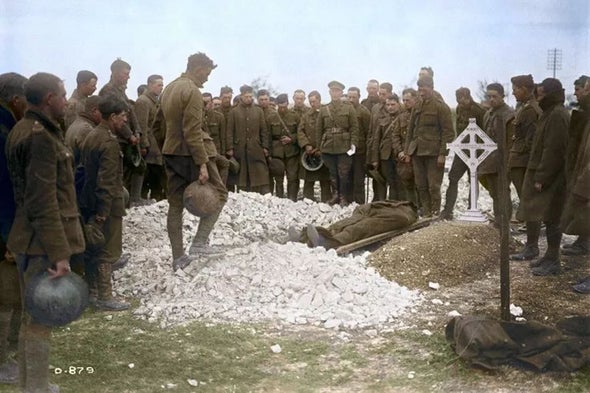
“A Burial Service at the Front.” Funeral of Major E.L. Knight, Eaton Motor Machine Gun Battery. October 1916. After over four years of death and destruction, the world was ready for peace.
The Treaty also aimed to create a new international order based on cooperation, disarmament, and collective security, with the establishment of the League of Nations.
The League of Nations was envisioned as an international organization that would promote diplomacy and prevent future conflicts between nations.
Furthermore, the Treaty aimed to address the grievances and aspirations of various national groups in Europe, including the establishment of new states such as Czechoslovakia and the recognition of the rights of minority groups.
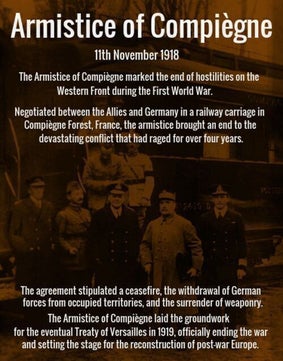
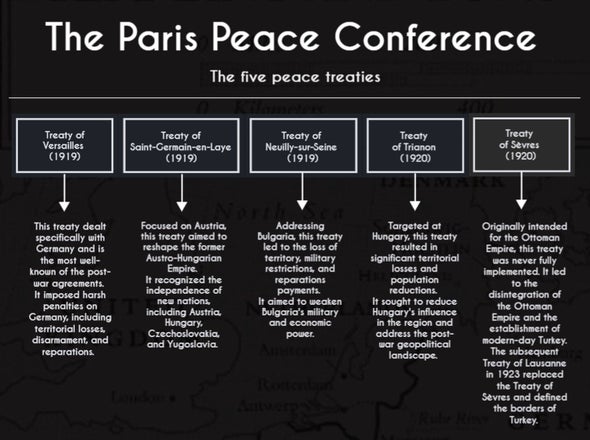
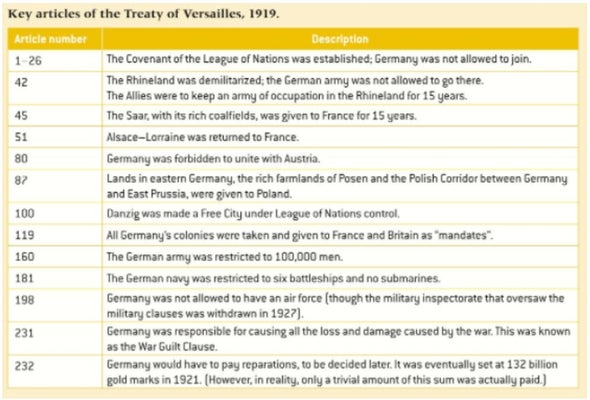
British Objectives:

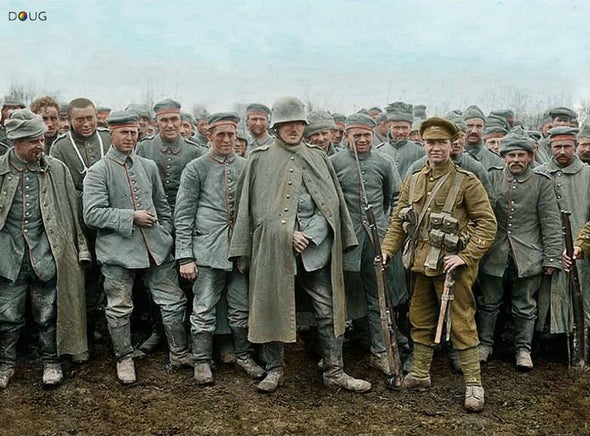
German prisoners captured by the 1st Northumberland Fusiliers, 3rd Division, and the 4th Royal Fusiliers in the attack on St-Éloi, 27th of March 1916. The British aims at the Treaty of Versailles was to avoid provoking a defeated Germany into seeking revenge in the future.
Colourised by Doug
French Objectives:

American Objectives:
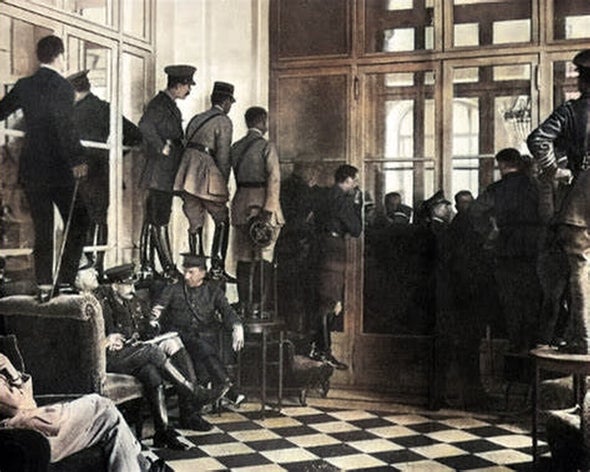
Attendees watching the signing of the Treaty.
Italian Objectives:
Japanese Objectives:

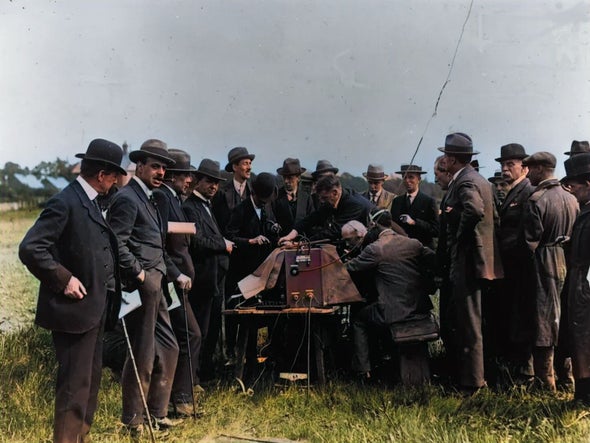
A group waits for news out of Versailles by a wireless Marconi radio, June 1, 1919.
Hulton Archive / Getty Images
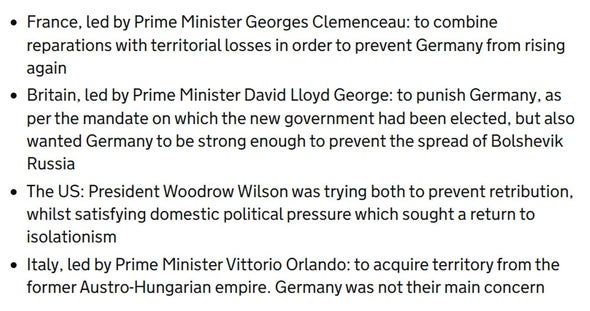
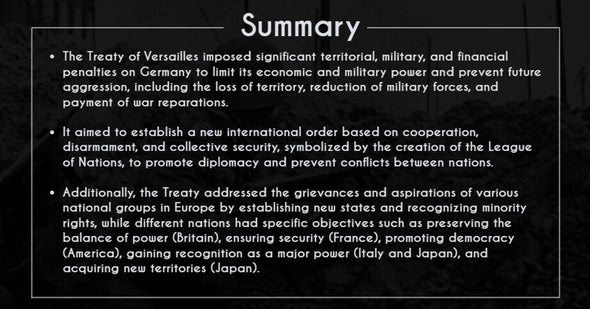
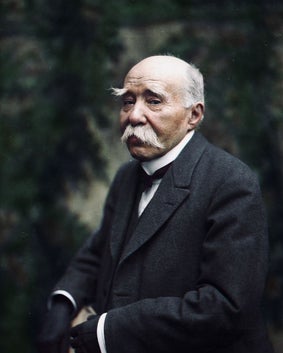
Prime Minister Georges Clemenceau of France, who wanted harsh terms inflicted on Germany.
The primary participants at the Treaty of Versailles were the victorious Allied Powers, including France, the United Kingdom, Italy, and the United States, which played a leading role in the negotiations.
The four major Allied powers were represented by their respective leaders:
Japan, which was also an Allied Power, was represented at the conference, but played a less significant role in the negotiations.
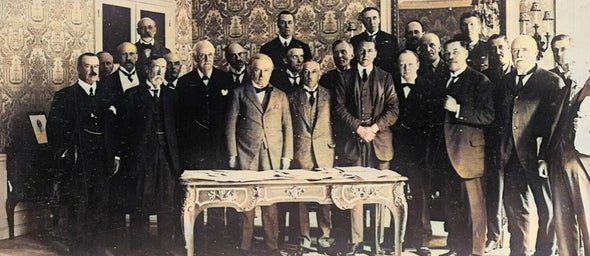
Delegates at the Treaty of Versailles. Winston Churchill is standing in the front row, third to the right of Prime Minister David Lloyd George. Chief of the Imperial General Staff, Sir Henry Wilson is immediately behind and to the right of Churchill.
On the German side, the main negotiator was Count Brockdorff-Rantzau, who represented the German government.
The German delegation was largely excluded from the negotiations, as the Allies believed that Germany was solely responsible for starting the war and should accept the terms of the Treaty without question.
Other countries and territories affected by the Treaty of Versailles, such as Austria-Hungary, the Ottoman Empire, and the various national groups in Europe, were not represented at the conference and had little say in the negotiations.
This would later prove to be a significant source of tension and instability in the region.
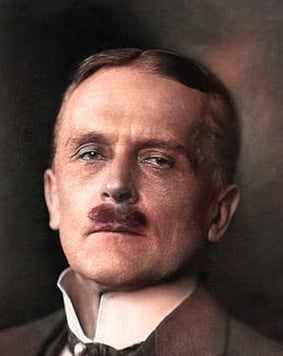
Count Brockdorff-Rantzau led the German delegation, who were generally excluded from the negotiations.
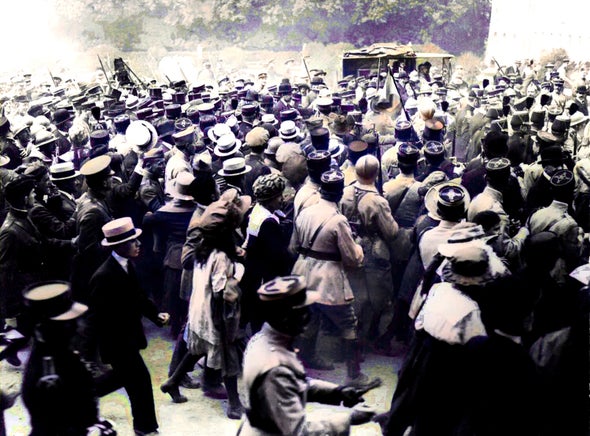
Crowds rush to the Palace of Versailles shortly after the signing of the treaty to celebrate the formal end of the First World War.
Daily Mirror / Mirrorpix / Mirrorpix via Getty Images
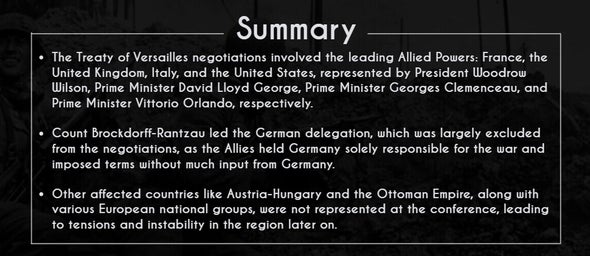
The Treaty of Versailles contained numerous clauses that addressed a wide range of issues. Some of the most important clauses included:
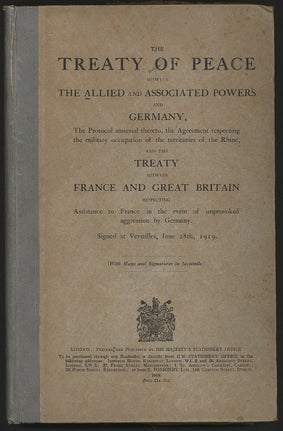
The cover of a publication of the Treaty of Versailles in English.

Workers put the finishing touches on sewing the carpet inside the conference hall before the signing of the treaty, June 28, 1919.
Hulton Archive / Getty Images
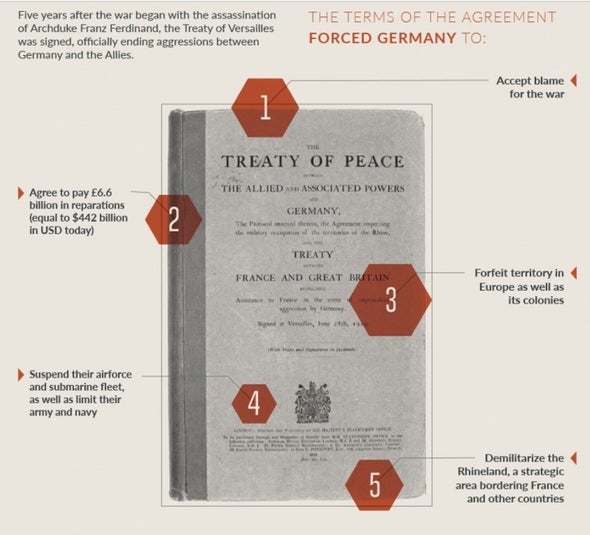
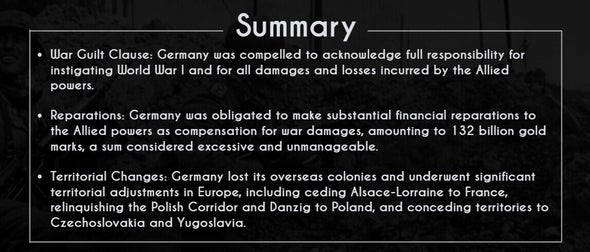
The Treaty of Versailles was an effort by the Allies to reduce German armaments. But it also reflected divergent national agendas.
The French wanted absolute fulfilment of the treaty, while Britain wanted to have an economically strong partner on the continent. Ultimately, the two sides failed to make the deal work.
This resentment fuelled the German French rivalry. Nevertheless, the Treaty of Versailles was a major step toward peace.
The Treaty imposed significant disarmament measures on Germany. The treaty required Germany to reduce its military to a very limited size and to give up its most advanced military technology, such as airplanes, tanks, and submarines.
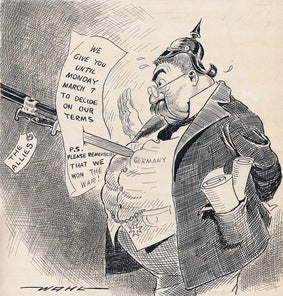
Cartoon reflecting the views of many Germans - they were being left little choice other than to accept the terms of the Treaty of Versailles
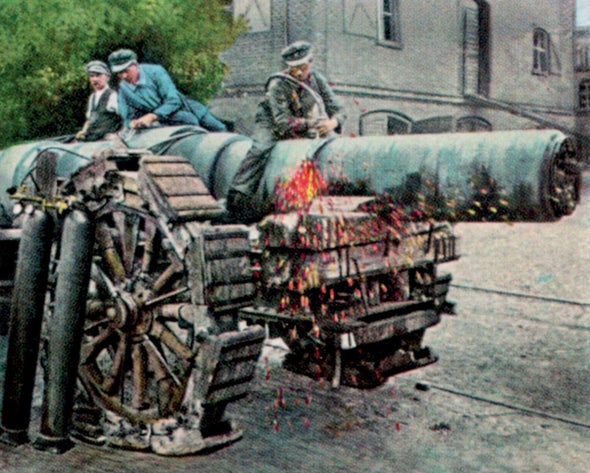
Workmen decommissioning a heavy gun, to comply with the terms of the Treaty.
Mary Evans Picture Library/Alamy
Germany was only allowed to have a small army of 100,000 soldiers, and conscription was abolished. The navy was reduced to six battleships, six cruisers, and 12 destroyers, and Germany was prohibited from having submarines.
The treaty also imposed restrictions on the types and amounts of weapons and ammunition that Germany could possess and all of Germany's territory west of the Rhine River became a demilitarized zone.
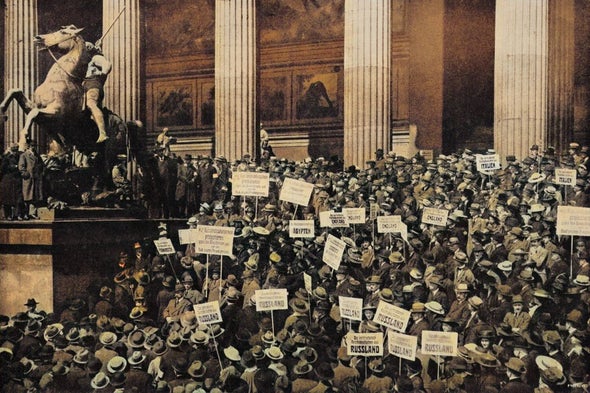
German politician Friedrich Naumann criticizes the Treaty of Versailles in the Museum of Berlin, 15th June 1919.
De Agostini / Biblioteca Ambrosiana / Getty Images
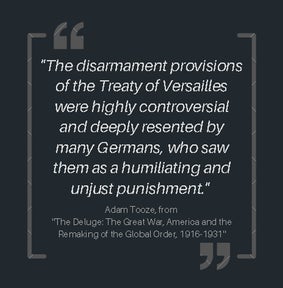
These disarmament measures were seen as a way to prevent Germany from becoming a military threat again in the future. The treaty's authors believed that by limiting Germany's military capacity, they could ensure that Germany would not be able to start another war.
However, they were a significant source of resentment for many Germans, who saw them as a humiliating imposition on their country's sovereignty.
The reduction in military power was seen as an insult to the country's martial traditions and a betrayal of the soldiers who had fought in the war.
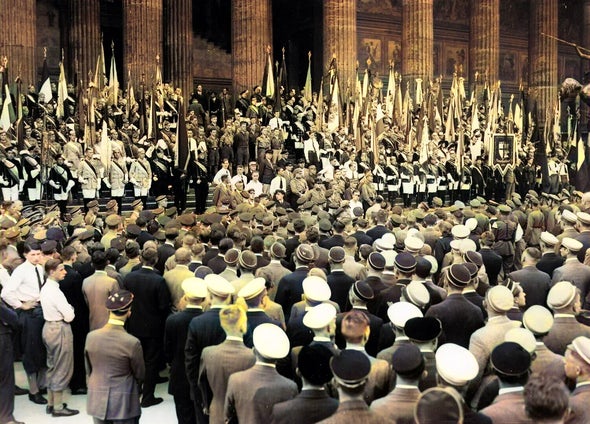
Massive rally protesting the terms of the Treaty of Versailles, Berlin, 1932.
Encyclopædia Britannica, Inc.
Despite this resentment, Germany complied with the disarmament measures, and the treaty was enforced by the occupying Allied forces.
However, the disarmament measures did little to prevent the rise of Adolf Hitler and the Nazi party, who were able to rebuild Germany's military power in secret and eventually went on to start the Second World War in Europe.
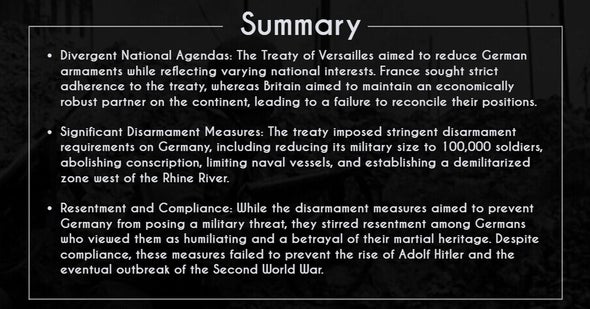

The Treaty of Versailles imposed significant financial reparations on Germany as a punishment for its role in the First World War.
The exact amount of the reparations was initially set at 132 billion gold marks, which was a staggering amount that Germany could not pay without causing severe economic damage to its country.
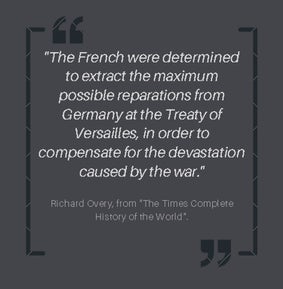
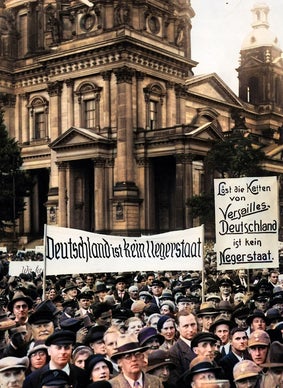
Racist banners at a Nazi-led rally against the Treaty of Versailles, June 28, 1933. The sign at the right reads, “Lose the chains of Versailles, Germany is not a Negro state.”
In addition to this, the treaty also included the provision that Germany would pay for the cost of the war itself. This meant that Germany had to pay for the war damages suffered by the Allies, which included everything from rebuilding infrastructure to compensating the families of fallen soldiers.
As Germany struggled to make its payments, it became clear that the reparations were unreasonably high and that Germany would not be able to pay them.
This led to negotiations, and eventually, the reparations were reduced to 50 billion gold marks. Germany struggled to make even these payments, and the issue remained contentious in German politics throughout the 1920s and 1930s.
The burden of paying these reparations was a significant strain on the German economy, and it led to a period of hyperinflation in the 1920s, where the value of the German currency plummeted. The cost of basic goods skyrocketed, and people struggled to afford even the most basic necessities.
In an attempt to ease the financial burden on Germany, the allied nations adopted the Dawes Plan in 1924 and the Young Plan in 1929.
This was short-lived, however, as the collapse of the German economy caused the payments to be suspended. The reparations were then cancelled in 1932 at the Lausanne Conference.
The burden of reparations played a significant role in the rise of the Nazi party, who used it as a rallying cry for their campaign.
The party argued that the Treaty of Versailles was a humiliating document that imposed unjust and unaffordable financial penalties on Germany, leading to widespread support for the party and ultimately contributing to the outbreak of the Second World War.

Germany 1923: A woman burns German marks in the furnace to heat the home during the peak of the Weimar Germany hyperinflation - caused by the high cost of reparations Germany were forced to pay as agreed by the Treaty of Versailles.
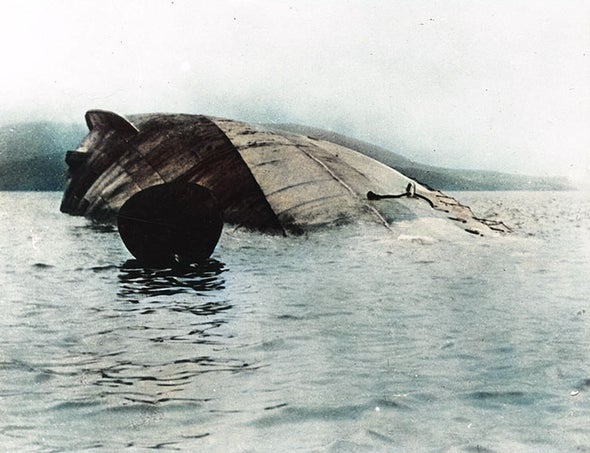
The German battlecruiser SMS Seydlitz after being scuttled at Scapa Flow on the 21st June 1919 . Following the Treaty of Versailles, the German naval fleet underwent significant reductions and restructuring. The treaty imposed strict limitations on the size and capabilities of the German Navy, prohibiting the possession of submarines, battleships, and aircraft carriers. However, the majority of the German fleet was scuttled at Scapa Flow in 1919 to prevent it from falling into Allied hands. This demilitarization aimed to curb German naval power and prevent any resurgence of maritime threats post-First World War.
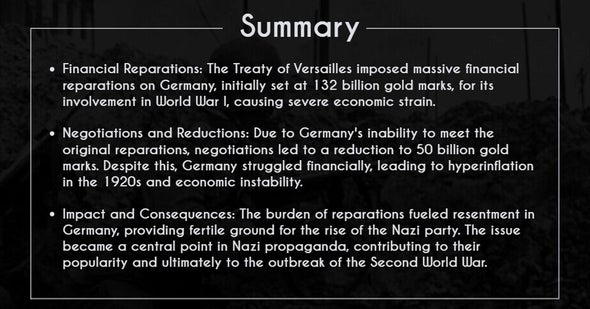
Germany was forced to cede the province of Alsace-Lorraine to France, which had been a contentious issue between the two nations for many years. Germany also lost significant territory to Poland, including the cities of Danzig and Posen, as well as the entire region of West Prussia.
The loss of this territory separated East Prussia from the rest of Germany, which further weakened the country and created the Polish Corridor - a stretch of land which linked Poland with the Baltic Sea and would prove to be a future flashpoint with Germany.
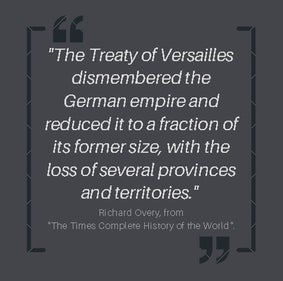
Additionally, the treaty granted independence to the newly formed Republic of Austria and established Czechoslovakia and Yugoslavia as independent nations, which reduced Germany's influence in the region.
The treaty also transferred control of the Saarland to France for 15 years and granted the Allies control of important economic resources such as the Ruhr Valley.